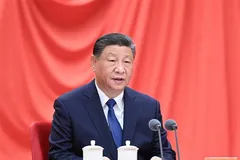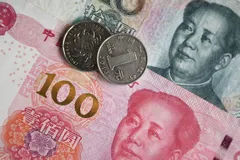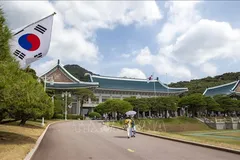
Exports recovery
Manufacturing and production recovered reasonably well in Vietnam in the first half of 2022, but growth peaked by the middle of the year and then slowed in pace by the second half, after demand began to decline significantly. By the end of 2022, production output, employment, and factory orders had all fallen sharply across the country. However, businesses were still able to contribute towards the economy in 2020 and 2021 because of consumer demand in the US and the European Union (EU).
According to statistics, inventories at retail and consumer companies in the US such as Nike and Lululemon reported an increase by about 20% in 2022. This led to a decrease in export orders in Vietnam by the end of 2022. In December 2022, exports decreased by 14% over the same period, to the US and the EU countries. However, now we expect export orders to recover by the second half of 2023, as retailers in the US and EU countries may need at least six months to clear inventory backlog.
Besides this, domestic sales in the US are now declining at a faster rate than during the global financial crisis of 2008. This will reduce demand for furniture and other non-essential household products that are made and exported from Vietnam. Besides these factors, the impact of interest rate hikes by the US (FED) and European Central Banks (ECB) will continue to slow down the US and European Union economies this year. The reason is that these two economies account for nearly half of Vietnam's total export turnover.
Increase in tourism
Chinese tourists account for a third of Vietnam's total tourist arrivals, hence when this market recovers fully in the second half of 2023, there could be an additional 20% increase in tourist arrivals this year.
Foreign tourism contributes about 10% to the GDP of Vietnam. Therefore, we estimate that a fraction of returning foreign tourists will contribute about 2% to the GDP growth in 2022 and will probably boost the GDP growth rate in Vietnam by more than 2% in 2023. This will more than offset the decline in the manufacturing sector. The reopening of China, as well as the full return of Chinese tourists in the second half of 2023, will have a positive impact on the Vietnamese economy because China is currently the largest trading partner and the second largest export market of Vietnam.
Infrastructure development
The Vietnamese government aims to increase public investment from 4% GDP in 2022 to 7% GDP in 2023, to help support long-term economic growth in the country. Hence new infrastructure is needed to ensure that more and more Foreign Direct Investment (FDI) flows into Vietnam for years to come. The government aims to increase infrastructure spending by about 50% this year, from about USD 20 bln in 2022 to over USD 30 bln in 2023, compared with about USD 16 bln on an average in annual spending on infrastructure in the last five years.
According to a report, the Government has in its coffers nearly USD 40 bln to be disbursed. This amount has been largely allocated for infrastructure projects over the years but has not yet been spent. This shows that the Government has the financial capacity to meet the spending targets in 2023. To overcome procedural bottlenecks, the Government announced Decree 1513 on 15 December 2022 to speed up the progress of a number of projects, including the North-South Expressway, which has been delayed for a long time. Decree 1513 clearly stipulates that by 2023 the amount of USD 15 bln must be spent.
Vietnam's government debt-to-GDP ratio is below 40%, which is very low compared to most emerging and developed markets in the world. This is partly because Vietnam spent less than 2% of GDP on Covid-19 pandemic control compared to an average of 6% in emerging markets.
FDI inflow
According to the JETRO survey, the main attraction of Vietnam for FDI stems from the fact that factory wages are only one-third of that in China and the quality of the workforce is comparable to that of Chinese workers. Another factor is Vietnam's geographical proximity to Asia's supply chains, especially the high-tech industry. In recent years, more and more multinational companies have begun to diversify their manufacturing operations outside of China for a variety of reasons, such as the inconvenient zero Covid policy and the US-China trade war.
The escalation of trade tensions, along with China's zero Covid policy, helps explain why the Samsung company, which is already Vietnam's largest foreign investor, announced that it will start producing semiconductor components in the country. Even Apple has announced that it will start producing Apple watches and MacBook computers in Vietnam. These will be the first products to be manufactured outside of China. As a result, FDI inflow into Vietnam increased by 14% in 2022 and expected to reach USD 22 bln in 2023.




















